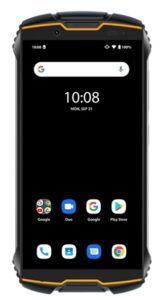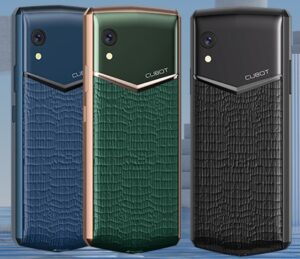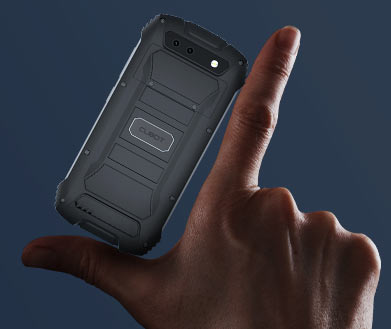I’ve been an iPhone user for decades now, but since 2017 I’ve also carried an Android device as part of my diabetes management. I tend to refer to it as my “pancreas phone”. There are a few features I look for in these:
- Able to run my CGM and my AID (“closed loop”) system.
- This implies reliable Bluetooth in order to talk to both the CGM and the insulin pump.
- Small enough to carry without feeling “cluttered”.
- Battery life that ideally lasts all day, so I can just recharge overnight and then be fine until at least the next bedtime.
- Ideally rugged and waterproof, so I don’t have to worry about dropping it, falling off a boat, into a pool, or just getting drenched in the rain.
Which features are important to you will be a personal decision of course.
This article is not an exhaustive list of suitable phones, and not advice that you should use one of these particular phones. But questions keep coming up about these phones in community forums, so it’s an attempt to summarize relevant information about them. The options for these phones keep developing over the years as new models appear.
Unihertz Atom
 For some time I used a Unihertz Atom. Originally this ran Android 8.1, but was upgraded to 9.0. The Atom is a tiny but chunky phone (with a 2.45-inch screen). This means that interacting with the keyboard (occasionally needed even for inputting numbers) requires careful tapping. The Atom’s fingerprint sensor on the home button is very convenient for unlocking the phone.
For some time I used a Unihertz Atom. Originally this ran Android 8.1, but was upgraded to 9.0. The Atom is a tiny but chunky phone (with a 2.45-inch screen). This means that interacting with the keyboard (occasionally needed even for inputting numbers) requires careful tapping. The Atom’s fingerprint sensor on the home button is very convenient for unlocking the phone.
But it is small and it’s rugged. I’ve submerged mine in water a few times without ensuing disaster. Back at Easter 2022 I was using one along with DASH pods for a fully-waterproof AID setup on a boating trip.
I found the Bluetooth performance improved with the Android 9 upgrade, but even so it still occasionally benefits from a reboot to reset everything.
The Unihertz phones have also included the earlier Jelly, the Jelly 2, and the larger and heavier Atom L/XL. I know others who have used these as “pancreas phones” successfully, but I never went down that path.
Cubot
This manufacturer has a lot of full-sized phones, but in 2019 brought out their first interesting smaller model. Compared to larger shop-front Android phones they’ve been relatively cheap (AU$140-200) although they usually take a few weeks to be delivered from China (usually bought via AliExpress).
They’re also interesting because they run fairly “plain” Android. Some manufacturers put a lot of customised things in, and especially customised battery management can be a problem with diabetes apps that need to stay running all the time. The one extra thing I do on a Cubot phone that I don’t have to on a Google phone is to disable DuraSpeed in the Settings app.
In 2022 they’ve introduced a slew of new models, so this article is a bit of an overview.
3G/4G bands
It’s worth noting that none of these phones so far have 5G radios, only 2G/3G/4G. That’s not really an issue though, as the data connections we use are fairly low-volume. In fact some people use them for WiFi-only connectivity (where the apps upload buffered data to network servers only occasionally).
Where it might come into play is if you were in an area that only had 5G coverage: you’d essentially be in a black spot. In fact various 4G bands are used in different places around the country, so if a phone doesn’t implement every 4G band then connectivity could be spotty in some areas. Anyone travelling to the USA should note that the phones do not have bands compatible with most US networks.
Cubot KingKong Mini
This small phone (which we tend to abbreviate to “KKM“) had a 4-inch screen, ran Android 9.0, but its battery sometimes struggled to last a full day. I’m not aware of many Australian T1Ders using them.
It’s a subtle black metal&plastic case, with your choice of either red or orange/yellow highlights on the front. The phone supports Bluetooth 4.2.
The KKM supports 3 of the 5 4G bands used by Optus, 2 out of Vodafone’s 3, and 4 out of Telstra’s 5. In NZ it supports 2 out of 3 bands on Spark’s network, and both of Vodafone’s bands.
Cubot KingKong Mini 2
 In late 2020 they updated the phone to create the KingKong Mini 2 (“KKM2“). Externally the phone looks identical to the KKM, but had some significant upgrades:
In late 2020 they updated the phone to create the KingKong Mini 2 (“KKM2“). Externally the phone looks identical to the KKM, but had some significant upgrades:
- Battery increased by 50% over the KKM.
- Android 10
- Otherwise the same guts: 4 CPU cores, 3 GB RAM, 32 GB ROM.
The 4G bands of the KKM2 are identical to the KKM. I have so far noticed no problems using these on the Optus or Telstra networks in eastern Australia.
In early 2021 I wrote about the KKM2 in “A new pancreas phone“. It worked well for me for a long time, and even now is the emergency backup phone in my BOB, configured and ready to go.
However while it was advertised as “rugged”, it certainly wasn’t waterproof even though the advertising said “waterproof for common liquid like rain, coffee, and tea”. I know a few people whose kids use KKM2s to manage their insulin pumps and found out the hard way that the KKM2 does not survive jumps into pools.
I also occasionally had frustrating experiences with mine’s Bluetooth refusing to pair with particular Dexcom transmitters (and several times I had to switch to a larger backup phone to get working again). Partly I blame this on Android 10’s Bluetooth implementation, but luckily some of these issues seem to have been worked around in later app updates.
Cubot Pocket
 In June 2022 they launched the Pocket. Available in 3 colours but with the same display panel as the KKM2, it had a number of upgrades:
In June 2022 they launched the Pocket. Available in 3 colours but with the same display panel as the KKM2, it had a number of upgrades:
- Android 11
- NFC for Google Pay (although it doesn’t work with Libre sensors).
- 4 CPU cores (but faster), 4 GB RAM and 64 GB ROM.
- Bluetooth 5.0
It’s not billed as rugged or waterproof.
Although the specifications say it has a similar thickness to the KKM/KKM2, because it’s flat and maintains that thickness most of the way across, it feels “chunkier”. The KKM/KKM2 only reach that maximum thickness in the middle of the body.
The Pocket adds one extra 4G band that’s used by Optus (so that’s 4 out of 5). That’s also Spark’s 3rd band in NZ.
This phone has been a solid performer for people using xDrip+, CamAPS, AndroidAPS, BYODA, etc. Some people are using it as both their normal “phone phone” as well as their “pancreas phone”.
Cubot KingKong Mini 2 Pro
 Then in August 2022 the “KKM2 Pro” came out. Exactly the same shape as the KKM2, but with significant improvements:
Then in August 2022 the “KKM2 Pro” came out. Exactly the same shape as the KKM2, but with significant improvements:
- Now billed as waterproof (although the claims are as mild as for the earlier KKM2).
Compared to the KKM2 there’s now a rubber gasket sealing the door over the SIM bay. - Android 11
- 8 CPU cores, 4 GB RAM and 64 GB ROM.
- Bluetooth 5.0
- Same capacity battery, but it seems to last a bit longer than the KKM2. This may be due to the faster CPU.
The 4G bands of the KKM2 Pro are identical to the KKM/KKM2.
Again, a solid performer for people using software like xDrip+, AndroidAPS, CamAPS, and BYODA. This has now been my main “pancreas phone” for a while.
Cubot KingKong Mini 3
 In October 2022 Cubot launched the KKM3. This is a bit of a redesign in the same family. But although it’s newer, for some people it might not have enough advantages over the KKM2 Pro. Features include:
In October 2022 Cubot launched the KKM3. This is a bit of a redesign in the same family. But although it’s newer, for some people it might not have enough advantages over the KKM2 Pro. Features include:
- Billed as rugged and waterproof.
- Android 12
- 8 CPU cores, 6 GB RAM, 128 GB ROM
- Bluetooth 5.0
- NFC (we don’t yet know if it will work with Libre sensors)
- Narrower and taller screen. The diagonal screen measurement has increased from 4 inches to 4.5, and overall the KKM3 is 1.2 cm longer than the KKM/KKM2/KKM2Pro.
The KKM3 supports the same 4G bands as the Pocket.
This does looks like an interesting device, but the first units have not yet arrived in Australia so we don’t have first-hand experience yet.
Cubot Pocket 3
 I don’t know what happened to a “Pocket 2”, but at the start of November 2022 Cubot launched the Pocket 3.
I don’t know what happened to a “Pocket 2”, but at the start of November 2022 Cubot launched the Pocket 3.
This seems to have identical internals to the KKM3, just with different external styling (again, a choice of 3 colours) and without a rugged/waterproof claim.
Which one to get?
If asked for a recommendation on which phone to get for a “pancreas”, I’d have to say the KKM2 Pro is a known and solid performer.
The KKM3 looks like it might be interesting for some people, but for now it’s a gamble. Time will tell.
The Pocket or Pocket 3 might be appropriate for some people, but that’s a personal decision. Again, the Pocket is a known solid performer, while the Pocket 3 is unknown at this point.
The KKM2 is looking a little long in the tooth now. If I was using one I wouldn’t necessarily upgrade just because newer models exist, but I probably wouldn’t choose to purchase one now.
Of course there are other options too. Many people use Samsung, Google, Motorola, and other Android phones of various models. But the Cubot ones are relatively inexpensive as well as fairly robust, which does make it easier to justify having an emergency backup in the cupboard for disaster management.


Great article! Love the “Disaster management” idea! ? ?
Thanks David, great article. Do you know if any are compatible with the minimed app that goes with the Medtronic 780g pump? Unfortunately that app doesn’t seem to be compatible with many Android phones, including Oppo. Cheers
No as you say, Medtronic is fairly restrictive about which phones their software will run on, and expect it would refuse to run.
Thanks heaps for this article! I’ve been researching a phone to run AndroidAPS for my son and this came just in time. There are just so many our there, especially from Cubot, as highlighted by this article. After reading this, I bought a KKM2 Pro. Great price on AliExpress too at $148 AUD. Thanks again!
I use a combo like you. And like you I was an iPhone user for a long time, but preferred not having 2 devices over switching to Android. Are there any other reasons why you use a separate phone for the loop? or just that you prefer iOS as your main phone?
I don’t use a Combo any more, but that’s beside the point. Certainly the Combo and other pumps I’ve been using do not work with iOS apps.
But my work and family IT environments have been Mac-based for years, and things like calendars/etc are tightly integrated with others. So staying with the iPhone is advantageous.
Other advantages I find of having separate devices include:
Hi David, I was reading through the article and the comments and this reply by you! I agree! I need to have my Pancreas phone separately! I have an old Samsung as my pancreas phone. But, I am looking at changing it to one of your suggestions. Thanks for the article and Just one last question: Which pump are you using now?
Thanks , Zhila
You make it sound as though I’m always using one pump. 😀
I sometimes use Omnipod DASH, but mostly I’m using a YpsoPump.
We’ve been using AndroidAPS on a much smaller and cheaper device than those wonderfully. Well made, rugged too.
The Soyes S10 MAX from AliExpress has a 3.5″ screen with Android 10. There’s probably a newer version of it by now.
AU $273.26 13% Off | SOYES S10 MAX Mini Rugged Smartphone 4GB RAM 64GB/128GB ROM Octa Core 2400mAh 13MP SOS PTT Waterproof Top Small Mobile Phone
https://a.aliexpress.com/_mqUqpEg
Looks like an interesting beast. Not cheaper though: a lot more expensive.
Will be good if they have an updated version with an operating system that’s not 3 years old.
Why wouldn’t the NFC on the Pocket work with Libre sensors?
There are multiple frequencies/bands involved in the NFC specification. It turns out some phones (like the Cubot Pocket, UniHertz Atom and Jelly 2, and the iPhone 6) don’t implement the ones used by Libre sensors. They only have enough to handle payments, which are much more common.
Thanks for the explanation, that’s unfortunate.
Do the other Cubot devices all run at the same frequency as the Pocket? Really looking for a small device to run xDrip on, I use Libre so the device needs to work with Libre sensors.
If you want Libre I think your only small Cubot options are the KingKong Mini 3 and probably the Pocket 3.
I mentioned that none of the others worked with Libre, but if you read the most recent blog post you’ll see my report on the KKM3.
txsm very clear, encouraging and helpful. do u know if i can get omnipod 5 to coordinate with the jelly?
No-one’s managed to get O5 to work with any of the AID systems other than its own, if that’s what you’re asking about.